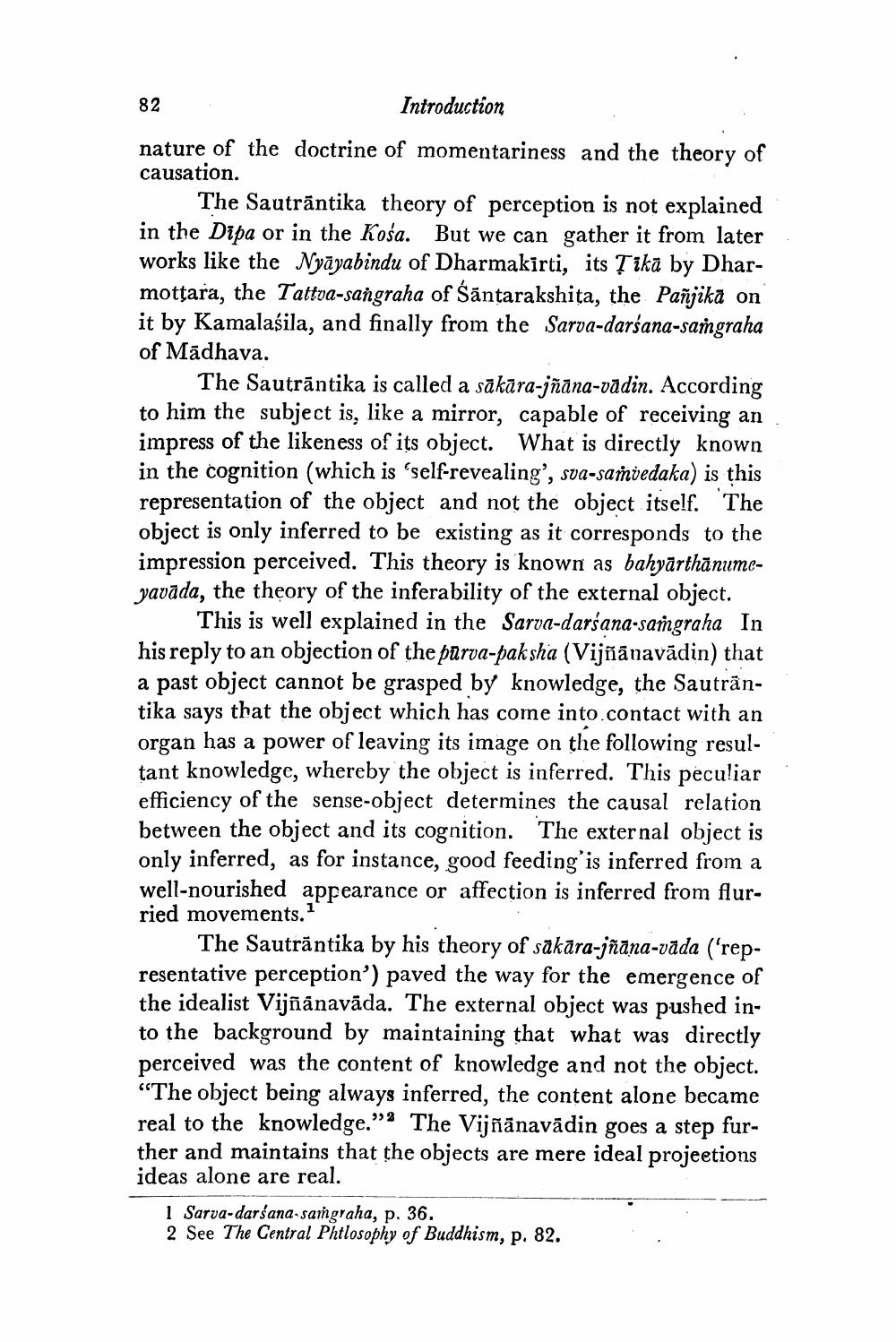________________ 82 Introduction nature of the doctrine of momentariness and the theory of causation. The Sautrantika theory of perception is not explained in the Dipa or in the Kosa. But we can gather it from later works like the Nyayabindu of Dharmakirti, its Tika by Dharmottara, the Tattva-sangraha of Santarakshita, the Panjika on it by Kamalasila, and finally from the Sarva-darsana-sangraha of Madhava. The Sautrantika is called a sakara-jnana-vadin. According to him the subject is, like a mirror, capable of receiving an impress of the likeness of its object. What is directly known in the cognition (which is 'self-revealing', sva-samvedaka) is this representation of the object and not the object itself. The object is only inferred to be existing as it corresponds to the impression perceived. This theory is known as bahyarthanumeyavada, the theory of the inferability of the external object. This is well explained in the Sarva-darsana-sangraha In his reply to an objection of the purva-paksha (Vijnanavadin) that a past object cannot be grasped by knowledge, the Sautrantika says that the object which has come into contact with an organ has a power of leaving its image on the following resultant knowledge, whereby the object is inferred. This peculiar efficiency of the sense-object determines the causal relation between the object and its cognition. The external object is only inferred, as for instance, good feeding'is inferred from a well-nourished appearance or affection is inferred from flurried movements." The Sautrantika by his theory of sakara-jnana-vada ('representative perception') paved the way for the emergence of the idealist Vijnanavada. The external object was pushed into the background by maintaining that what was directly perceived was the content of knowledge and not the object. "The object being always inferred, the content alone became real to the knowledge."2 The Vijnanavadin goes a step further and maintains that the objects are mere ideal projeetions ideas alone are real. 1 Sarva-darsana-samgraha, p. 36. 2 See The Central Phtlosophy of Buddhism, p. 82.




